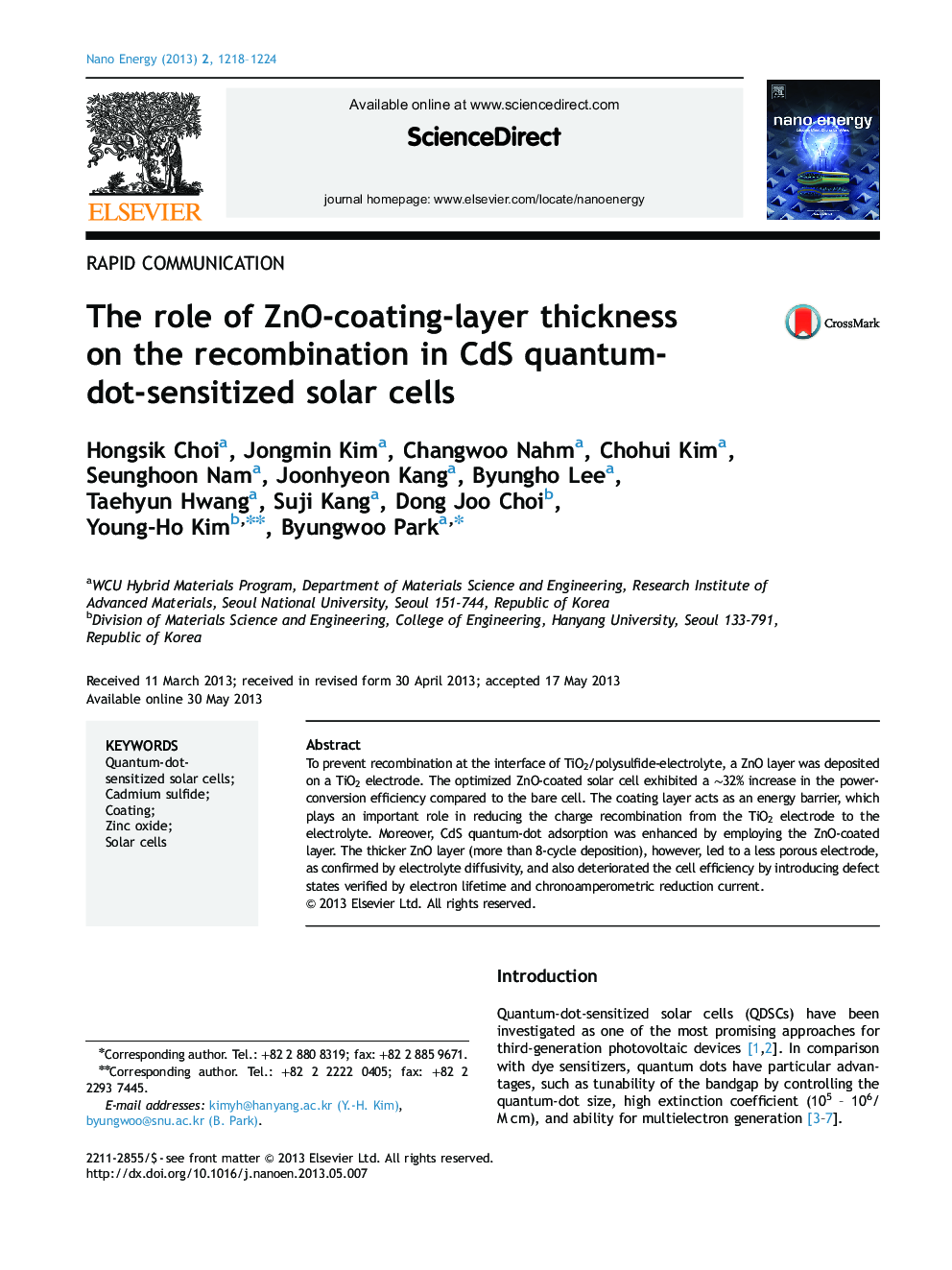| Article ID | Journal | Published Year | Pages | File Type |
|---|---|---|---|---|
| 1558095 | Nano Energy | 2013 | 7 Pages |
•The effects of ZnO thicknesses on the photovoltaic properties are investigated.•The ZnO-coated solar cell exhibits ∼32% higher power-conversion efficiency.•Recombination mechanisms at the TiO2/electrolyte interface are analyzed.•Increased amount of CdS quantum dots are rendered by ZnO coating.•Diffusivity of electrolyte is examined with respect to the porosity of TiO2.
To prevent recombination at the interface of TiO2/polysulfide-electrolyte, a ZnO layer was deposited on a TiO2 electrode. The optimized ZnO-coated solar cell exhibited a ∼32% increase in the power-conversion efficiency compared to the bare cell. The coating layer acts as an energy barrier, which plays an important role in reducing the charge recombination from the TiO2 electrode to the electrolyte. Moreover, CdS quantum-dot adsorption was enhanced by employing the ZnO-coated layer. The thicker ZnO layer (more than 8-cycle deposition), however, led to a less porous electrode, as confirmed by electrolyte diffusivity, and also deteriorated the cell efficiency by introducing defect states verified by electron lifetime and chronoamperometric reduction current.
Graphical abstractThe optimized ZnO-coated solar cell exhibited a ∼32% increase in the power-conversion efficiency compared to the bare cell. The enhanced efficiency by nanoscale coating was attributed to the reduced recombination at the TiO2/polysulfide–electrolyte interface and increased amount of CdS quantum dots.Figure optionsDownload full-size imageDownload as PowerPoint slide
